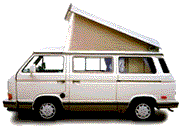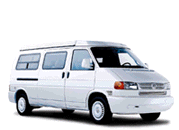Date: Fri, 15 Apr 94 13:31:11 CDT
Sender: Vanagon Mailing List <vanagon@vanagon.com>
From: Joel Walker <JWALKER@ua1vm.ua.edu>
Subject: vw parts numbering system
well, once again it is a slow day in the local burg, so i thought i'd type
this in:
..........................................................................
Number Crunching - the lowdown on Volkswagen's part numbering system.
by Timothy N. Gavern, with special thanks to John Ludwig
(VW TRENDS, March 1992)
If you've been around Volkswagens a while, you have probably caught on
to the fact that there is a system to their parts numbers. A good VW
parts man can usually go to the shelf and get the part you came in for
without even looking it up in the book. Of course, he probably double-
checks to be sure that he has the right one ... But, the reason that he
can pull parts this way is because Volkswagen had the foresight in it's
infancy to develop an extremely efficient nine digit system of numbering
(with letters of the alphabet sometimes appearing as suffixes).
This system makes it easy for him (or her) to come up with the correct
part because of how the part number identifies what the part is. The
nine digit number starts off with three digits indicating what type,
model, or version of car (or truck) the part is for. The following
digit is the main group that the part is from. The following two digits
are the sub-group identifiers and the last three digits are the part's
actual number within the group and sub-group. If there are any letters
following the number, they are the modification code. Sound difficult?
Look at this example and you will see how simple it really is.
Part number 176 867 009 C MT3 is a blue left door trim panel for a
Golf 2-door. The breakdown to identify the part goes like this:
The first three digts, "176", distinguish the Type, Model, or Version
of the vehicle (Golf, 2-door).
The following number, "8", is the main group number from which the part
is from (Body). <sic>
Next, the two digits, "67", indicate the sub-group number (Door trim
panels, side trim panels, trunk linings, roof and pillar linings,
and grab handles)
followed by "009 C" which is the part's number (Left side, front door
panel).
Following the part number is the "MT3" modification code (Blue).
A further breakdown of the part number is in order here. It is
important to remember that the first three digits indicate the type,
model, or version only for which the part was originally designed.
This could confuse people sometimes, but realize that parts can also be
used on other vehicles and because of this fact the first three digits
do not etch in stone that the part is for only one particular vehicle.
Think about the case of an oil dipstick. Why should Volkswagen make
five different ones when one could suffice for several vehicles. Hence,
your dipstick part number could have a different first three digits
than the digits that indicate your model. In this case, the first three
digits would indicate which car model or type the dipstick was originally
designed for ... not the model you have. Simple.
Next digit in the part number are the group number, the groups are
broken down into ten categories (or groups). <sic> The one digit
indicates which group the part is from.
1. Engine
2. Fuel tank, exhaust system, heating and air conditioning
3. Transmission
4. Front axle, steering, differential
5. Rear axle
6. Road wheels, brakes
7. Hand-lever system, pedal cluster (frame)
8. Body
9. Electrical
10. Factory accessories such as jacks, tools, and stickers
In the case of the part number that we identified above, Group 8
indicates that it was a body part.
The subgroup is the next identification; which follows the group number
and is indicated by a two digit code. In our case, "67", which means
section 67 of the main group 8 in the Golf microfiche. This makes
finding the part in the microfiche much easier and faster.
Following the subgroup is the actual part number or "actual" numerical
designation. "009" is the actual part number. Actually, the ninth
digit in the part number is the part's real number. In our example,
it is an odd number (9). Odd numbers usually indicate a left side part
and even numbers usually indicate a right side part. Those parts which
could be used on either side usually have an odd ninth number. Our part
is a left side door panel, so the number is odd. Note: It is very
important to remember that left, right, front, rear are determined from
the driver's seat in driving position.
Last, but not least, is the modification code at the end of our number.
These are added to the part number if the part has been modified or
changed. This means if the part has been changed to different
materials, construction of the part has changed, or even if the supplier
has changed. The "C" indicated in our part number could be a
manufacturing plant code, a change in materials, or whatever. These
parts with modification codes may or may not interchange with parts
having the same part number and no modification code. These letters
also very importantly can tell you what color the part in question is.
As in our case, where "MT3" signifies the color blue.
One last important thing to remember is not to confuse the chassis
numbers (VIN numbers) with part numbers. The part numbers only indicate
the parts that make up a vehicle, but the chassis number simply
distinguishes one vehicle from another. We hope this article will make
it a little easier for you to understand Volkswagen's part numbering
system and that you are a little more appreciative of the fact that
their system works so well.
........................................................................
i'm not sure when vw put this system into effect, so i don't know if
it applies to the oldest generation of buses. as i recall, the 2nd
generation of buses had part numbers usually beginning with 211.
vanagon part numbers usually begin with 251. eurovan part numbers
(i think) begin with 700.
this does NOT apply to electrical parts, or tranmission parts. electric
parts seem to start mostly with 025 (which seems to be a designation for
Bosch). transmission parts seem to start with the type of transmission
... that is, an air-cooled vanagon 4-speed has a 091 transmission, and
parts for that transmission would start with 091. a vanagon syncro
transmission is an 094, and its parts (but only those SPECIFIC to the
Syncro) would start with 091. any 094 parts that are common to the 091
would start with 091.
it's kinda neat to notice that the Oh-my-God-straps in the campers,
those grab-and-hang-on straps for the rear seat passengers, start with
113 ... the old faithful Beetle. :)
joel
| 
